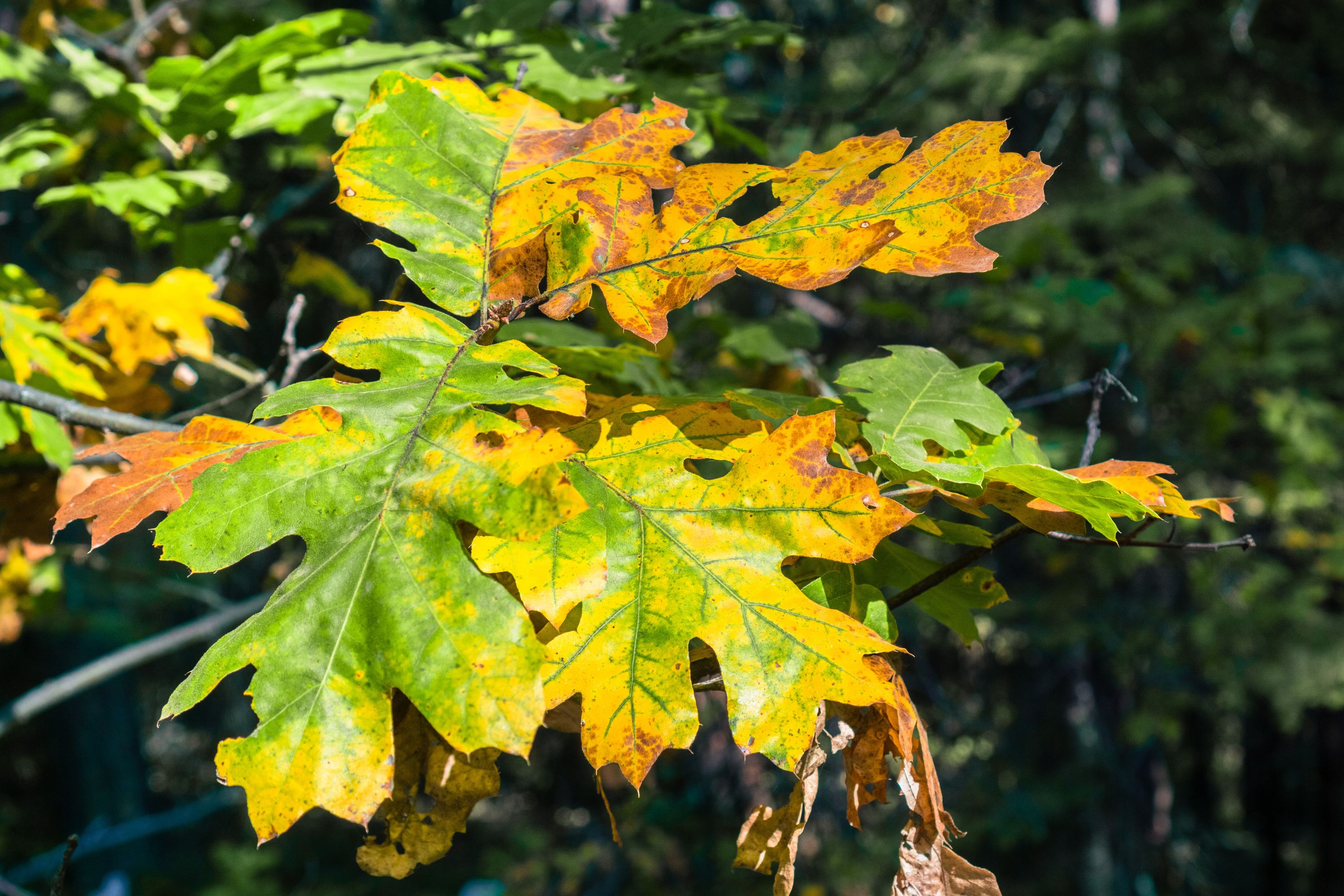California black oak
(Quercus kelloggii)

Description
Quercus kelloggii, the California black oak, also known as Kellogg oak, is an oak in the red oak section (genus Quercus, section Lobatae, series Agrifoliae), native to western North America. Although genetically separated from them for more than 20 million years, its leaves (though not its fruit) are remarkably similar in appearance to several other members of the red oak section including the red oak (Quercus rubra) and the black oak (Quercus velutina) found in eastern and central North America. Quercus kelloggii typically grows from 9–25 meters (30–82 feet) in height and from 0.3–1.4 m (1–4+1⁄2 ft) in diameter. Large trees may exceed 36 m (118 ft) in height and 1.6 m (5 ft 3 in) diameter, with the record holder measuring 38 m (124 ft) tall and 2.7 m (9 ft) thick (in the Siskiyou National Forest in Oregon). The species also grows in shrubby scrub-oak form on poor sites. In open areas, the crown is broad and rounded, with lower branches nearly touching the ground or forming a browse line. In closed stands, the crown is narrow and slender in young trees and irregularly broad in old trees. Trunks are usually free of branches on the lower 6–12 m (20–39 ft) in closed stands. Trunks are often forked, and usually decayed and hollow in older trees. The bark is thin and smooth in young trees, becoming thick, ridged, plate-like, and blackish with age. This oak grows from one to several vertical roots which penetrate to bedrock, with large, laterally spreading roots extending off from vertical ones. It also has a number of surface roots. Acorns are relatively large in this species, from 2.5–4 centimeters (1–1+1⁄2 in) long and 1.5–1.8 cm (1⁄2–3⁄4 in) wide. The leaves are typically 10–25 cm (4–9+3⁄4 in) long and deeply lobed, usually into seven portions; they are red and velvety when young, turning yellow-green then orange-brown in autumn. While individual trees generally have a lifespan between 100 and 200 years, California black oak can live up to 500 years. The tree reproduces when its acorns sprout to form seedlings. It also reproduces vegetatively with new growth sprouting from the root crown after the tree is top-killed by wildfire, logging, frost, or other events.
Taxonomic tree:







